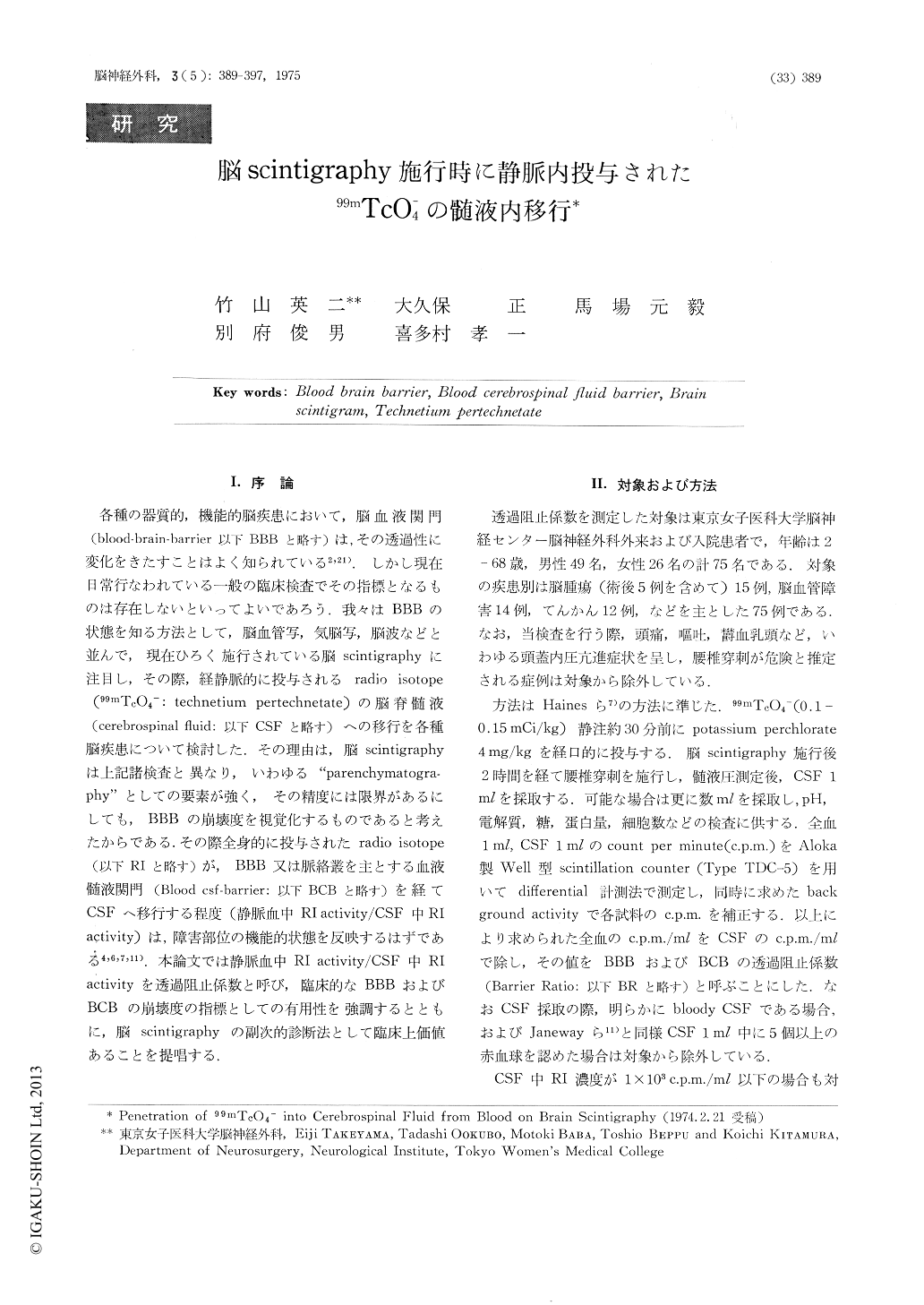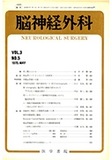Japanese
English
- 有料閲覧
- Abstract 文献概要
- 1ページ目 Look Inside
Ⅰ.序論
各種の器質的,機能的脳疾患において,脳血液関門(blood-brain-barrier以下BBBと略す)は,その透過性に変化をきたすことはよく知られている2,21).しかし現在日常行なわれている一般の臨床検査でその指標となるものは存在しないといってよいであろう.我々はBBBの状態を知る方法として,脳血管写,気脳写,脳波などと並んで,現在ひろく施行されている脳scintigraphyに注目し,その際,経静脈的に投与されるradio isotope(99mTcO-4:technetium pertechnetate)の脳脊髄液(cerebrospinal fluid:以下CSFと略す)への移行を各種脳疾患について検討した.その理由は,脳scintigraphyは上記諸検査と異なり,いわゆる"parenchymatography"としての要素が強く,その精度には限界があるにしても,BBBの崩壊度を視覚化するものであると考えたからである.その際全身的に投与されたradio isotope(以下RIと略す)が,BBB又は脈絡叢を主とする血液髄液関門(Blood csf-barrier;以下BCBと略す)を経てCSFへ移行する程度(静脈血中RI activity/CSF中RI activity)は,障害部位の機能的状態を反映するはずである4,6,7,11).
It is well known that the permeability of the blood brain barrier and blood cerebrospinal fluid barrier changes more or less in various diseases of the central nervous system. At present, there is no clinically available index which reflects the alteration of the permeability of the blood brain barrier and blood cerebrospinal fluid barrier.
The brain scintigraphy is an examination which detects a breakdown in the blood brain barrier, its clinical usefullness is limited only in a localized and extremely pathological process of the brain.

Copyright © 1975, Igaku-Shoin Ltd. All rights reserved.


